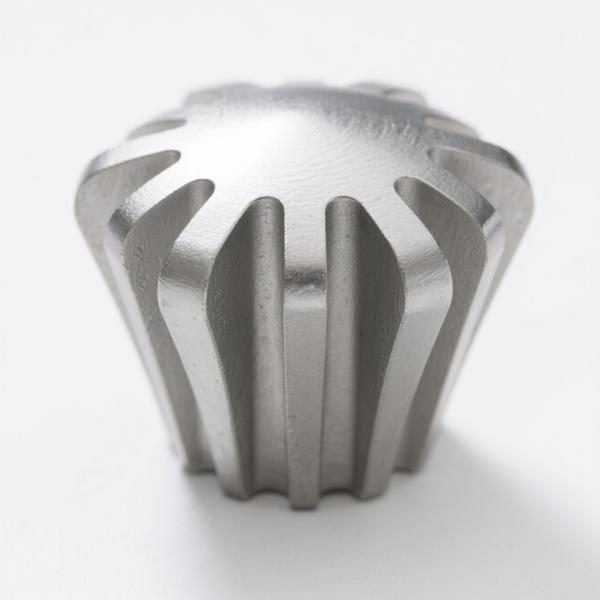Innovations and Expansions: The New Horizons of Aluminum Forging
Aluminum forging, a time - tested manufacturing process, continues
to evolve and adapt to the changing demands of modern industries.
With advancements in technology and an increasing focus on
sustainability and performance, aluminum forging is unlocking new
opportunities and redefining its role in the global manufacturing
landscape.
1. Advanced Aluminum Forging Technologies
1.1 Isothermal Forging
Isothermal forging has emerged as a revolutionary technique in
aluminum forging. This process involves forging the aluminum alloy
at a constant temperature, typically close to the alloy's
recrystallization temperature. By maintaining a stable temperature,
isothermal forging enables precise control over the deformation
process, resulting in components with uniform microstructure and
enhanced mechanical properties.
For high - end aerospace components, such as turbine disks and
compressor blades, isothermal forging allows for the production of
parts with complex geometries and superior fatigue resistance.
Compared to conventional forging methods, isothermal forging can
increase the fatigue life of components by up to 50%, making it a
preferred choice for critical aerospace applications.
1.2 Closed - Die Forging with 3D Printing - Assisted Dies
The integration of 3D printing technology with closed - die forging
is another significant advancement. 3D - printed dies can be
customized to create intricate shapes and designs that were
previously difficult or impossible to achieve with traditional die
- making methods. This combination not only reduces the lead time
for die production but also allows for more efficient material
utilization.
In the automotive industry, manufacturers are using 3D - printed
dies for closed - die forging of aluminum suspension components.
The ability to rapidly prototype and produce dies means that new
designs can be tested and refined more quickly, accelerating the
product development cycle.
2. Aluminum Forging in Emerging Industries
2.1 Renewable Energy
The renewable energy sector is increasingly turning to aluminum
forging to meet the demands of sustainable power generation. In
wind turbines, forged aluminum hubs and blades offer high strength
and durability while keeping the weight low. For example, a typical
2 - megawatt wind turbine can use over 10 tons of forged aluminum
components, which contribute to the turbine's efficiency and
longevity.
In the solar energy field, aluminum - forged frames for solar
panels provide excellent corrosion resistance and structural
stability, ensuring reliable performance in various environmental
conditions. As the renewable energy industry continues to grow, the
demand for aluminum - forged components is expected to increase
exponentially.
2.2 Medical Devices
The precision and biocompatibility requirements of medical devices
make aluminum forging an attractive manufacturing option. Forged
aluminum is used in the production of surgical instruments,
orthopedic implants, and diagnostic equipment components. The high
- strength and corrosion - resistant properties of forged aluminum
ensure the reliability and safety of these critical medical
products.
For instance, some orthopedic implants made from forged 7075
aluminum alloy have shown excellent long - term performance in
patients, with a reduced risk of implant failure compared to other
materials.
3. Sustainability in Aluminum Forging
3.1 Energy - Efficient Forging Processes
Modern aluminum forging processes are becoming more energy -
efficient. New heating technologies, such as induction heating, are
being adopted to reduce energy consumption during the forging
process. Induction heating can heat the aluminum alloy more rapidly
and precisely, minimizing heat loss and reducing overall energy
usage by up to 30% compared to traditional heating methods.
3.2 Recycling and Circular Economy
Aluminum is one of the most recyclable materials, and the forging
industry is capitalizing on this. Recycling of scrap aluminum
generated during the forging process and post - consumer aluminum
products is on the rise. By using recycled aluminum in forging,
manufacturers can reduce their dependence on virgin materials,
lower production costs, and decrease their environmental footprint.
Studies have shown that recycling aluminum requires only 5% of the
energy needed to produce virgin aluminum. This makes the use of
recycled aluminum in forging a key factor in promoting a circular
economy within the manufacturing industry.
4. Market Trends and Future Outlook
The global aluminum forging market is experiencing a paradigm
shift. While the aerospace and automotive industries remain the
major consumers, the growing demand from emerging sectors is
reshaping the market dynamics. According to a report by
MarketsandMarkets, the global aluminum forging market is expected
to reach a value of $5 billion by 2028, growing at a CAGR of 40%
from 2023 to 2028.
The increasing focus on lightweighting, sustainability, and the
development of new materials and technologies will drive the
continued growth of the aluminum forging industry. As manufacturers
strive to meet the evolving needs of consumers and industries,
aluminum forging will play an even more crucial role in shaping the
future of manufacturing.
5. Comparative Analysis of Aluminum Forging Processes
The following table provides a detailed comparison of different
aluminum forging processes, highlighting their key features,
advantages, and typical applications:
Forging Process | Temperature Range | Pressure Range | Advantages | Typical Applications |
Open - Die Forging | 400 - 500°C | 50 - 500 MPa | Cost - effective for small - batch production, flexibility in shape | Large structural components, prototypes |
Closed - Die Forging | 350 - 550°C | 100 - 1000 MPa | High precision, repeatability, complex shapes | Automotive parts, aerospace components |
Isothermal Forging | 450 - 550°C | 200 - 800 MPa | Uniform microstructure, enhanced mechanical properties | High - performance aerospace and automotive components |
Upset Forging | 380 - 520°C | 80 - 600 MPa | Efficient material utilization, good for cylindrical parts | Bolts, shafts, fasteners |
In conclusion, aluminum forging is no longer just a traditional
manufacturing process; it has transformed into a dynamic and
innovative field. With its continuous evolution in technology,
expanding applications in emerging industries, and growing emphasis
on sustainability, aluminum forging is poised to play an
increasingly important role in the global manufacturing ecosystem
for years to come.

















